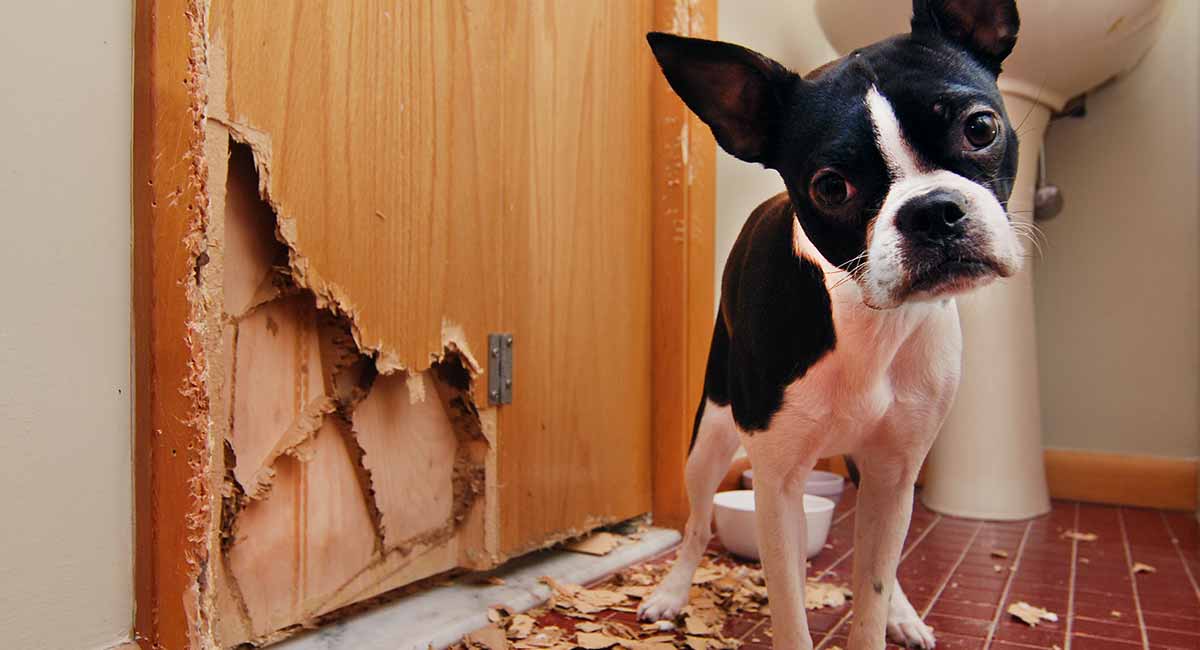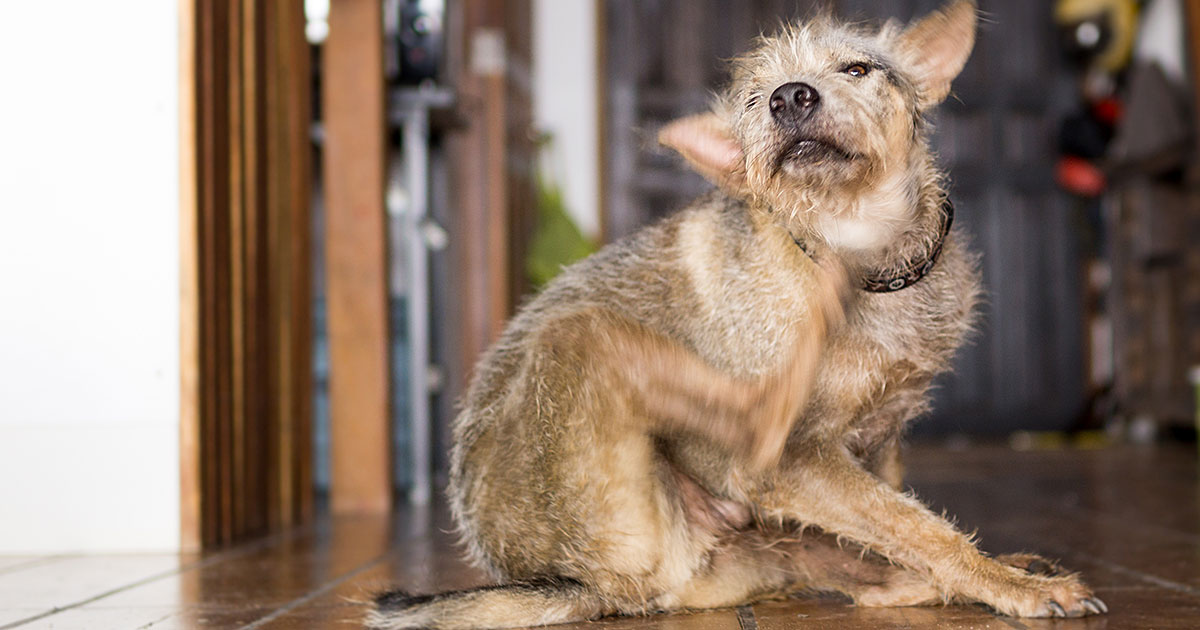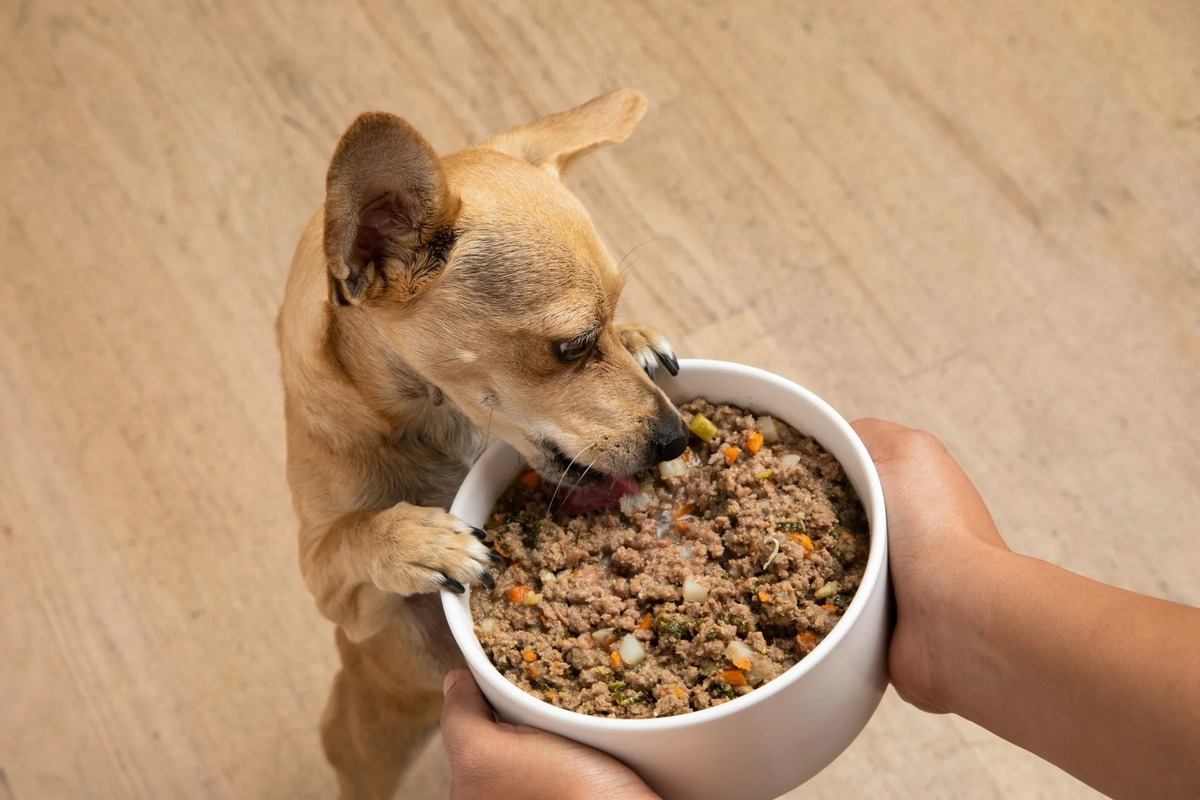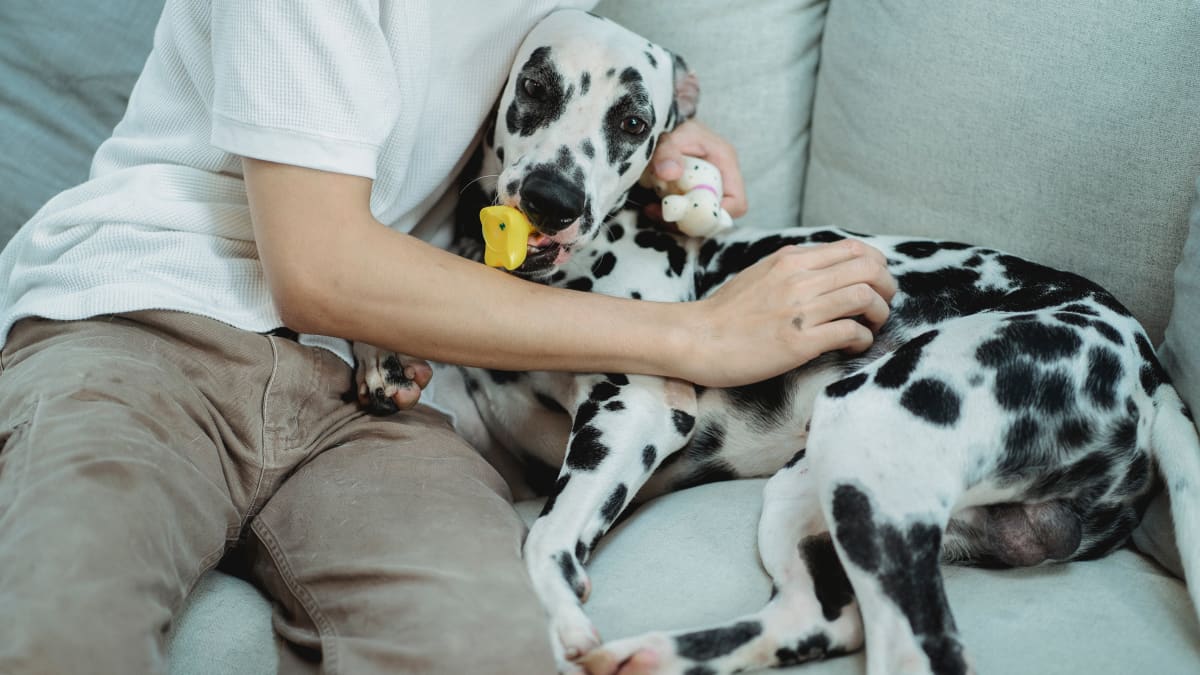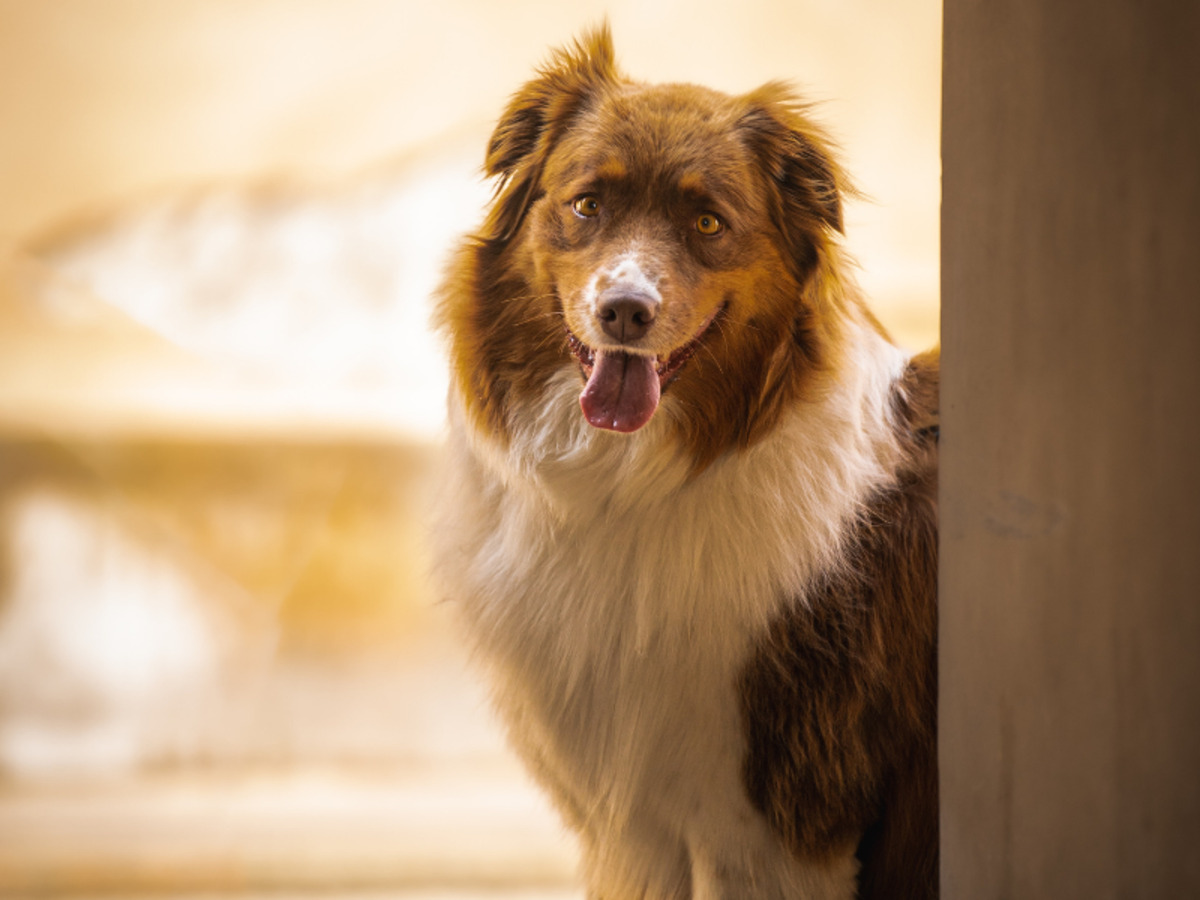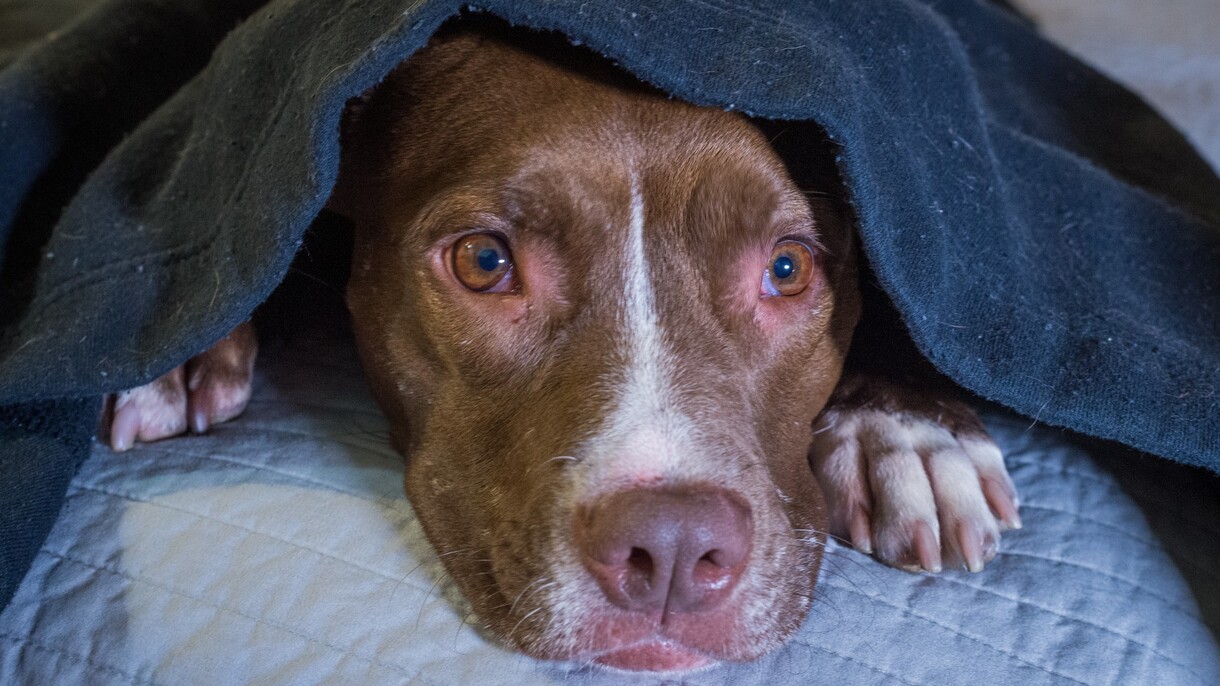Home>Health & Wellness>Behavior & Cognitive Care>How To Stop Dog Whining Due To Anxiety


Behavior & Cognitive Care
How To Stop Dog Whining Due To Anxiety
Published: January 30, 2024
Learn effective strategies to stop dog whining caused by anxiety with behavior and cognitive care techniques. Help your furry friend find relief and peace.
(Many of the links in this article redirect to a specific reviewed product. Your purchase of these products through affiliate links helps to generate commission for Pawsomeoldies.com, at no extra cost. Learn more)
Table of Contents
Understanding the Causes of Dog Anxiety
Dog anxiety is a complex and multifaceted issue that can stem from various sources. Understanding the potential causes of anxiety in dogs is crucial for providing effective care and support. Here are some common factors that can contribute to dog anxiety:
-
Separation Anxiety: Dogs are social animals, and being separated from their human companions can trigger anxiety. This is particularly common in dogs that have experienced sudden changes in their routine or environment.
-
Fear and Phobias: Dogs can develop anxiety due to specific fears or phobias, such as loud noises (thunderstorms, fireworks), unfamiliar environments, or certain objects. These fears can be deeply distressing for dogs and may lead to anxious behaviors.
-
Traumatic Experiences: Dogs, like humans, can be deeply affected by traumatic experiences. Past abuse, neglect, or frightening encounters can leave a lasting impact on a dog's mental well-being, leading to anxiety in various situations.
-
Lack of Socialization: Insufficient socialization during a dog's formative months can contribute to anxiety in unfamiliar settings or around new people and animals. Dogs that have not been exposed to diverse environments may struggle to adapt and feel anxious in novel situations.
-
Health Issues: Physical discomfort or underlying health problems can manifest as anxiety in dogs. Pain, illness, or discomfort can cause distress and lead to anxious behaviors, highlighting the importance of addressing potential health concerns.
-
Changes in Routine: Dogs thrive on routine and familiarity. Any significant changes in their daily schedule, living environment, or family dynamics can disrupt their sense of security, potentially triggering anxiety.
Understanding these potential causes of dog anxiety is the first step toward providing compassionate care and support for our canine companions. By recognizing the underlying factors contributing to anxiety, we can take proactive measures to alleviate their distress and improve their overall well-being.
Recognizing the Signs of Anxiety in Dogs
Recognizing the signs of anxiety in dogs is essential for proactive intervention and providing the necessary support to alleviate their distress. Dogs, like humans, exhibit a range of behaviors and physical cues that indicate underlying anxiety. By understanding and identifying these signs, pet owners can address their dog's emotional well-being effectively.
Behavioral Indicators
- Excessive Panting and Pacing: When a dog is anxious, it may exhibit rapid or excessive panting, often accompanied by restless pacing. This behavior signifies inner turmoil and discomfort.
- Destructive Behavior: Anxious dogs may engage in destructive behaviors, such as chewing furniture, digging excessively, or tearing apart household items. These actions can serve as coping mechanisms for their anxiety.
- Excessive Barking or Whining: Unexplained and persistent barking or whining can be a clear indicator of anxiety in dogs. This vocalization often reflects their distress and unease.
- Avoidance or Hiding: Dogs experiencing anxiety may seek seclusion or attempt to hide in confined spaces, such as under furniture or in closets, as a way to escape perceived threats or sources of stress.
- Aggression or Irritability: Anxiety can manifest as uncharacteristic aggression or irritability in dogs. They may display defensive behaviors in response to perceived threats, even in familiar settings.
Physical Cues
- Trembling or Shaking: Dogs may physically tremble or shake when experiencing anxiety. This visible sign of distress indicates their heightened emotional state.
- Excessive Drooling: Anxiety can lead to excessive drooling in dogs, even in the absence of food or treats. This physiological response reflects their emotional unease.
- Changes in Posture: Anxious dogs may exhibit tense body language, such as lowered head, tucked tail, or a hunched posture. These physical cues convey their discomfort and emotional distress.
Additional Signs
- Excessive Licking or Chewing: Dogs may excessively lick or chew their paws or other body parts as a self-soothing behavior when anxious.
- Changes in Appetite: Anxiety can impact a dog's appetite, leading to either decreased or increased food consumption.
- Excessive Shedding: Anxious dogs may experience increased shedding due to stress, reflecting an imbalance in their emotional well-being.
By recognizing these signs of anxiety in dogs, pet owners can take proactive steps to address their dog's emotional needs and create a supportive environment to alleviate their distress. Understanding these indicators enables pet owners to respond with empathy and tailored care, promoting the overall well-being of their beloved canine companions.
Tips for Calming an Anxious Dog
Calming an anxious dog requires patience, empathy, and a deep understanding of your pet's emotional needs. By implementing the following tips, you can provide effective support and create a soothing environment for your anxious dog.
1. Maintain a Calm Demeanor
Dogs are highly attuned to human emotions, and they often mirror the energy of their owners. When addressing an anxious dog, maintain a calm and reassuring demeanor. Your composed presence can help alleviate their distress and provide a sense of security.
2. Establish a Safe Space
Create a designated safe space for your dog where they can retreat when feeling anxious. This area should be quiet, comfortable, and equipped with familiar items, such as their bed, toys, and blankets. Encouraging your dog to use this space when distressed can help them feel secure and protected.
3. Gentle Physical Contact
Physical touch can be incredibly comforting for anxious dogs. Engage in gentle petting, soothing massages, or cuddling to provide reassurance and alleviate their stress. Pay attention to your dog's body language to ensure they are receptive to physical contact.
Read more: How To Stop Dog Anxiety Peeing
4. Implement Calming Techniques
Explore calming techniques, such as gentle music, aromatherapy, or the use of calming pheromone diffusers, to create a tranquil atmosphere for your dog. These methods can help reduce anxiety and promote relaxation in your pet.
5. Regular Exercise and Mental Stimulation
Regular exercise and mental stimulation are essential for managing anxiety in dogs. Engage in physical activities and interactive play sessions to channel your dog's energy in a positive direction. Mental stimulation through puzzle toys and training exercises can also help alleviate anxiety by keeping your dog's mind occupied.
6. Consistent Routine
Establishing a consistent daily routine can provide a sense of predictability and stability for your anxious dog. Consistency in feeding times, walks, and play sessions can help reduce uncertainty and create a structured environment that promotes a sense of security.
7. Positive Reinforcement
Utilize positive reinforcement techniques to encourage calm and confident behavior in your dog. Reward moments of relaxation and composure with treats, praise, and affection, reinforcing a positive association with a calm state of mind.
8. Professional Guidance
Seeking guidance from a professional dog behaviorist or veterinarian can provide valuable insights and tailored strategies for managing your dog's anxiety. Professional support can help address underlying issues and develop a comprehensive plan for your dog's emotional well-being.
By implementing these tips with patience and dedication, you can play a pivotal role in calming your anxious dog and fostering a harmonious and emotionally supportive bond. Understanding your dog's individual needs and providing tailored care can significantly alleviate their anxiety and enhance their overall quality of life.
Creating a Safe and Comfortable Environment for Your Dog
Creating a safe and comfortable environment for your dog is paramount in fostering their emotional well-being and overall sense of security. By proactively designing a nurturing space tailored to your dog's needs, you can significantly alleviate their anxiety and promote a harmonious living environment. Here are essential strategies to consider when crafting a safe and comfortable environment for your beloved canine companion.
1. Designated Safe Space
Establishing a designated safe space within your home provides your dog with a retreat where they can seek solace during moments of anxiety or distress. This area should be secluded from high-traffic areas and equipped with familiar items, such as a cozy bed, favorite toys, and comforting blankets. By encouraging your dog to use this space when feeling overwhelmed, you provide them with a secure sanctuary to regain composure.
2. Minimize Noise and Distractions
Reducing exposure to loud noises and disruptive stimuli is crucial for creating a tranquil environment for your dog. Consider minimizing exposure to loud appliances, construction noises, or other sources of commotion that may trigger anxiety. Additionally, providing a quiet and peaceful atmosphere can significantly contribute to your dog's overall comfort and well-being.
Read more: How To Stop Anxiety-Induced Panting In Dogs
3. Comforting Aromas and Sounds
Incorporating calming aromas, such as lavender or chamomile, can have a soothing effect on your dog's emotional state. Similarly, playing soft, ambient music or utilizing white noise machines can help mask external disturbances and create a serene ambiance within your home. These sensory elements can contribute to a calming environment that promotes relaxation for your dog.
4. Safety Measures
Ensuring the safety of your dog within your home environment is essential for their peace of mind. Remove potential hazards, secure cabinets containing harmful substances, and address any potential escape routes to prevent accidental injuries or stressful situations. By creating a physically safe space, you instill a sense of security and protection for your dog.
5. Consistent Routine and Predictability
Establishing a consistent daily routine provides your dog with a sense of predictability and stability, which are fundamental for reducing anxiety. Consistency in feeding times, exercise routines, and sleep schedules fosters a structured environment that promotes a feeling of security and comfort for your dog.
6. Access to Natural Light and Fresh Air
Maximizing your dog's access to natural light and fresh air can positively impact their emotional well-being. Ensure that your dog's living space allows for ample natural light during the day, and consider providing access to outdoor areas or designated outdoor time for physical activity and mental stimulation.
By implementing these strategies, you can create a safe and comfortable environment that caters to your dog's emotional needs and promotes a sense of security and well-being. Understanding the importance of environmental factors in influencing your dog's emotional state empowers you to proactively design a nurturing space that supports their overall happiness and contentment.
Seeking Professional Help for Severe Anxiety Issues
In cases of severe anxiety in dogs, seeking professional help is paramount to address the underlying causes and implement effective management strategies. Professional intervention can provide invaluable support for both the dog and their owner, offering specialized insights and tailored approaches to alleviate severe anxiety issues.
A veterinarian with expertise in behavior and cognitive care can conduct a comprehensive assessment to identify the root causes of the dog's anxiety. Through a thorough evaluation of the dog's medical history, behavioral patterns, and environmental factors, the veterinarian can gain a holistic understanding of the underlying triggers contributing to the dog's severe anxiety.
Upon identifying the specific anxiety triggers, the veterinarian may recommend a multifaceted approach to address the dog's severe anxiety. This approach may encompass behavior modification techniques, environmental modifications, and, in some cases, the incorporation of medication to manage the dog's anxiety symptoms. Medication, when prescribed, is carefully selected based on the dog's individual needs and is often used in conjunction with behavioral interventions to achieve optimal results.
Furthermore, a certified dog behaviorist or trainer specializing in anxiety-related issues can provide personalized guidance and structured behavior modification programs tailored to the dog's unique anxiety triggers and responses. These professionals can offer targeted strategies to desensitize the dog to anxiety-inducing stimuli, implement counter-conditioning techniques, and foster positive behavioral changes through systematic training protocols.
In addition to professional guidance, dog owners play a pivotal role in the successful management of severe anxiety issues. Collaborating closely with the veterinary behaviorist or trainer, dog owners can actively participate in implementing recommended behavior modification protocols, creating a supportive environment, and consistently reinforcing positive behaviors in their anxious dog.
Ongoing communication and collaboration with the veterinary behaviorist or trainer are essential to monitor the dog's progress, make necessary adjustments to the management plan, and address any emerging concerns effectively. This collaborative approach ensures that the dog receives comprehensive and tailored support to alleviate severe anxiety and improve their overall well-being.
By seeking professional help for severe anxiety issues, dog owners demonstrate a commitment to prioritizing their pet's emotional health and quality of life. Through the expertise and guidance of qualified professionals, dog owners can gain the knowledge and resources needed to effectively manage severe anxiety in their beloved canine companions, fostering a harmonious and emotionally supportive bond.

